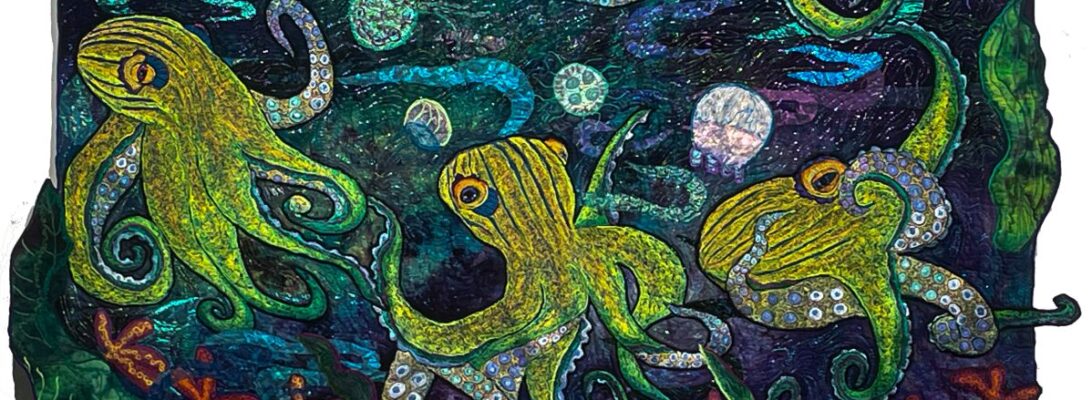There are people who tell me they can plan a quilt. They make drawings. They decide what they’re going to do. And that’s what they do.
Personally, I’m in awe. I can design until I’m blue. Somewhere in the middle, the quilt lets me know what it needs. And I need to follow that down whatever road it leads me down.

I fell in love with this mockingbird image. But it’s off my map a bit. Once I got it embroidered, I realized it was strictly a desert bird.
I don’t do desserts. I’m a water creature. I live in moonlight and water. But this is a bird full of sun and fire.

So I went looking for a background. I happened to have some purple behind the piece of orange I put up. And it had the bright green aura of cactus in it. The purple added a night and day element.
I needed to decide on plants. If I were to do anything it had to be cactus.

You can tell the fact that I don’t think in terms of deserts when I tell you I had nothing to make cactus and desert from. I had to dye more greens.
Which is when I found these wonderful pictures of owls in cactus.
So now I’m making owl heads. I need to do them before I make the cactus so I can make holes and fit them in.




One decision leads to another. I can’t make one until I’ve made that. Then new questions get asked and new things get included. If I think I’m in charge, I’m delusional.
But I believe in my art. I believe in what it demands. I am its servant. And I am willing to listen to what it would like me to do next.






























































